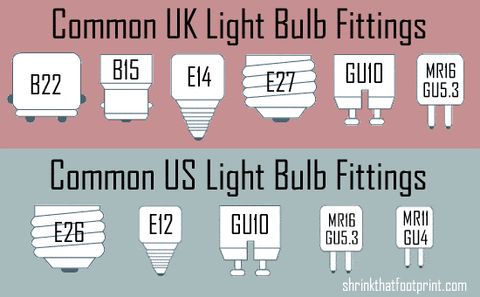Confused about light bulbs? I don’t blame you. As with everything else, the efficiency and benefits that technology brings have moved us far away from simple 40-watt, 60-watt, and 100-watt bulbs!
Not only that, but somewhere in the mix, we were told that we should switch to the twisty style of not-so-eco light bulbs that actually have a four-page Safety Protocol in the case of one breaking. It turns out they contain between 4-5 milligrams of mercury in every bulb. Mercury is a heavy metal that is toxic to humans and classified as hazardous waste, causing damage to the brain, nervous system, kidneys, and lungs. There are also extra risks for pregnant women.1
Oddly I don't recall being briefed on the extensive safety document that includes but is not limited to: 🤔
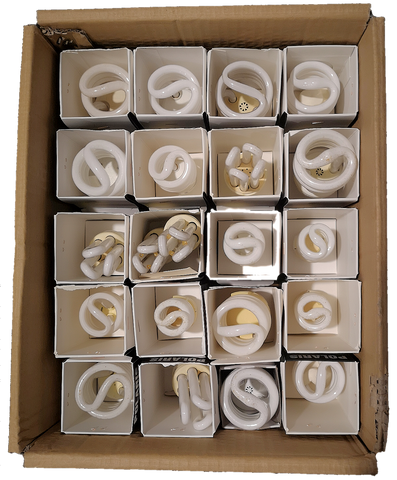
- Have all people and pets leave the room.
- Shutting off any air conditioning or vents.
- Airing out the room by opening doors and windows.
- Not vacuuming.
- Sealing the broken pieces in a glass jar with a metal lid.
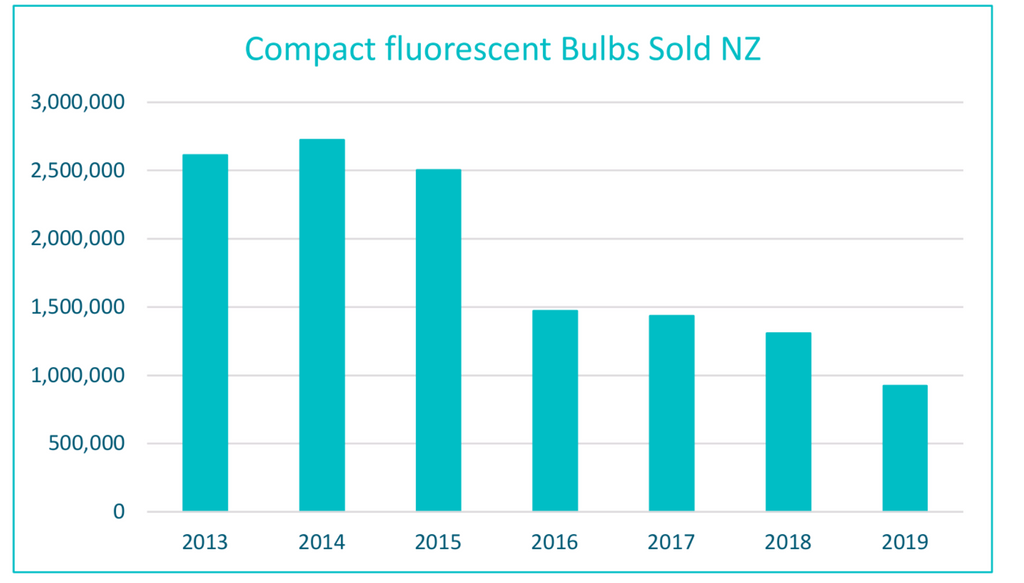
Now, if that’s the process when only one bulb breaks, it makes you wonder what has happened with the 13 million that were sold between 2013 and 2019 in NZ alone… 😬
Pretty scary stuff. So, after a bit of research and some savvy negotiations, here are the basics from what I can gather…
LOW DOWN ON LIGHT BULBS
The Hard and Fast Basics:
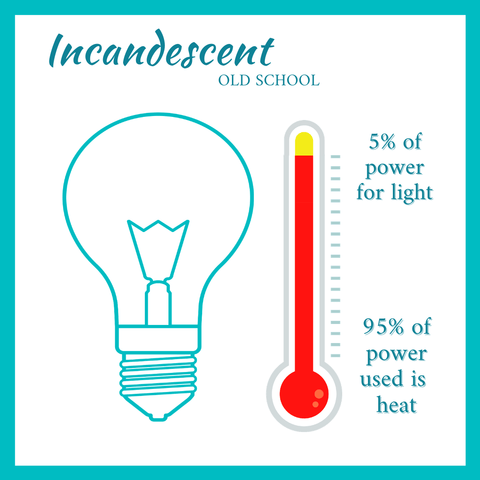
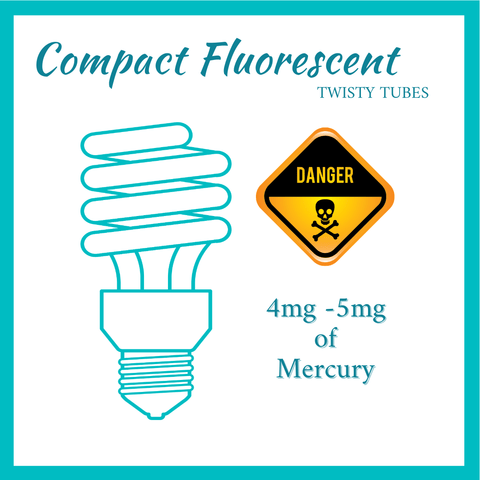
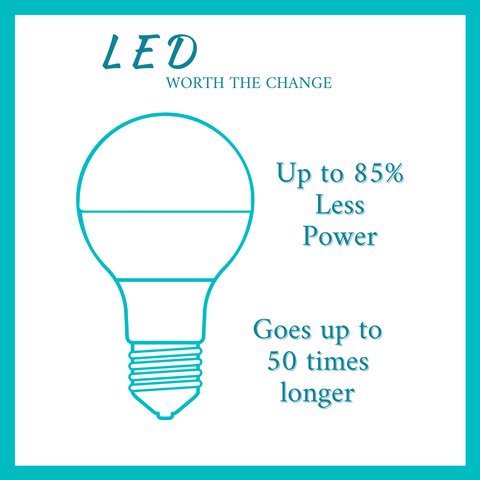
The What's, Why's and How's:
INCANDESCENT BULBS:
- Old-school.
- Invented by Edison in 1879.
- Creates light by heating up the coil.
- 95% of energy goes toward heat.
- Only 5% of energy goes toward creating the light!
- Lifespan of 1000 hours.
- Requires between 40w and 100w of power to light a standard room.
HALOGEN INCANDESCENT BULBS:
- Basically, an incandescent bulb but with halogen gas inside it to extend usage to between 2000 and 4000 hours.
- No change in energy use.
FLUORESCENT BULBS:
- Gas-filled tube or bulb.
- Uses positive and negative charges to cause electrodes to bump into mercury atoms, creating a crash flash.
- Each standard bulb contains 4mg - 5mg of mercury.
- Mercury is a heavy metal that is toxic to humans and that can cause serious brain, liver, kidney, and nervous system damage.
- Four pages detailing broken fluorescent bulb safety protocol.
- Classified as hazardous waste with limited and expensive CFL disposal around the country.
- Produces dirty energy.
- Lifespan of 6000 hours.
- Requires 9w - 20w of power to light a standard room.
LED BULBS:
- Each bulb uses up to 85% less power.
- A light used for 3-4 hours per day can save you around $2.50 a month.
- LED stands for “Light Emitting Diode.”
- Requires 9w - 12w of power to light a standard room.
- Uses a positive and negative charge to move electrons to give off light, similar to a fluorescent bulb, but uses a small semiconductor instead of toxic mercury.
- Light is directional so less wasted space gets lit up.
- Lifespan average of 30,000 hours.
- Lifespan can be between 15,000 - 50,000 depending on factors like more heat in downlight fittings, etc.
BRIGHTNESS = LUMENS
In the past, all 60-watt bulbs produced a similar amount of light, so measuring the brightness this way worked fine. But now an LED bulb requires only 7 watts to light up the same room, so using power consumption as an indicator is no longer applicable.
However, just as the difference between a 60-watt bulb and a 100-watt bulb was not life or death, the difference between an 800-lumen bulb and a 1600-lumen bulb isn't as dramatic as one might think.
|
60 watt
|
6 watt
|
|
75 watt
|
7.5 watt
|
|
100 watt
|
10 watt
|
|
120 watt
|
12 watt
|
COLOUR = K (kelvin)
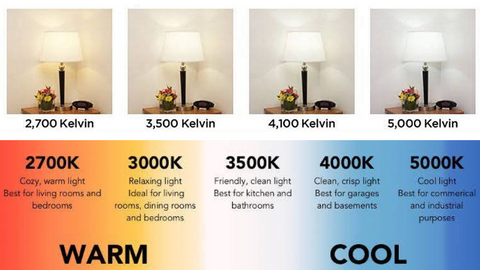 Colour refers to how soft/orange or how bright/blue the glow is.
Colour refers to how soft/orange or how bright/blue the glow is.
Points to consider:
- It’s your personal preference. For example, I prefer a warmer/oranger light, similar to a candle. However, some people prefer a cooler or bluer light.
- Consider the room where the light will be shining. For example, kitchens would generally be a brighter white, using the more crisp, clear sharpness of cool light. Meanwhile, a side lamp or bedroom light may be more suited to a softer, warmer, amber tone.
- Lastly, colour is important when it comes to our ability to wind down, especially for those suffering from lack of sleep or insomnia. This is because colour accounts for how much blue (UV) light is emitted.
Our bodies do this really cool thing: They switch between the production of cortisol (adrenalin) and melatonin and vice versa depending on the level of sunlight around them. Blue light in brighter light bulbs can affect this natural process, making it harder to fall asleep.
The blue light in items such as TVs and phones can also affect your natural sleep process. However, this problem can be easily solved by simply turning on a blue light filter. Those who don't have a blue light filter built in can easily download programs like f.lux blue light screen filter, which is free. You simply set it to where you are in the world and it will remove the blue light at sunset, then ease it back on at sunrise. This is also great for eye strain.
LIGHT FITTINGS
This is simply the bulb connection. Most homes will run a standard Bayonet (E27) or a screw in (E22).
But, of course, there are myriad other fittings for all types of connections, so I'll just leave this little pic here.
So is it worth replacing your bulbs? Yes!
- If you have the original incandescent bulbs and use them 3 - 4 hours per day, replacing this with one LED Bulb could save you up to $2.50 per month per bulb.
- If you have a CFL twisting tube bulb then it is worth the comfort of knowing there is not a hazardous toxic ball hanging smack band in the middle of each of your family rooms.
SAY WHAAAA? Yup! This simple but effective change means that anyone and everyone can take an action that instantly affects home safety, savings, and carbon emissions. We have secured a large (but limited) supply of LED bulbs and we are offering them to you at crazy prices because we want them in your home ASAP!
Let's do this 10,000 LED Bulbs NZ!
Up to 568,189 kg less carbon emissions!
Up to $262,080.00 less spent on power!
*Over a 12 month period, 4 hours per day. Based on 10,000 LED bulbs replacing 10,000 incandescent 80 watt bulbs
1 Methylmercury Exposure and Health Effects Young-Seoub Hong, Yu-Mi Kim, Kyung-Eun Lee J Prev Med Public Health. 2012 Nov; 45(6): 353–363. Published online 2012 Nov 29. doi: 10.3961/jpmph.2012.45.6.353PMCID: PMC3514465


